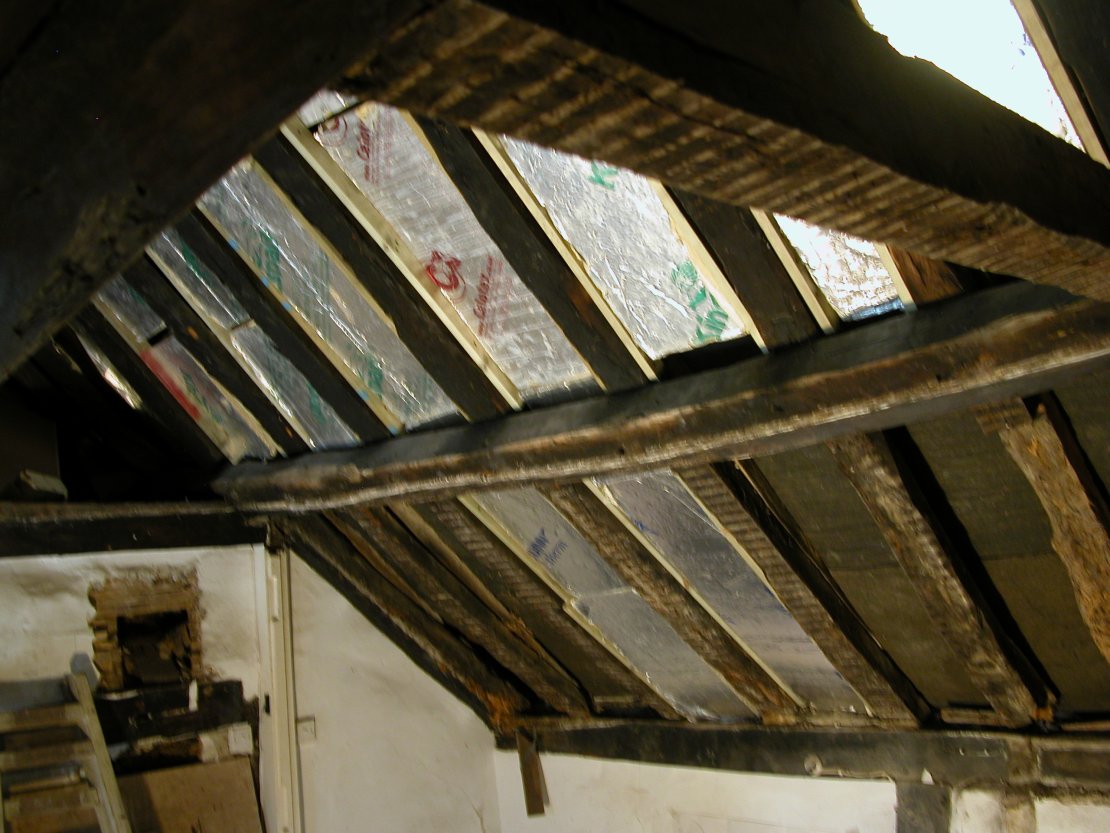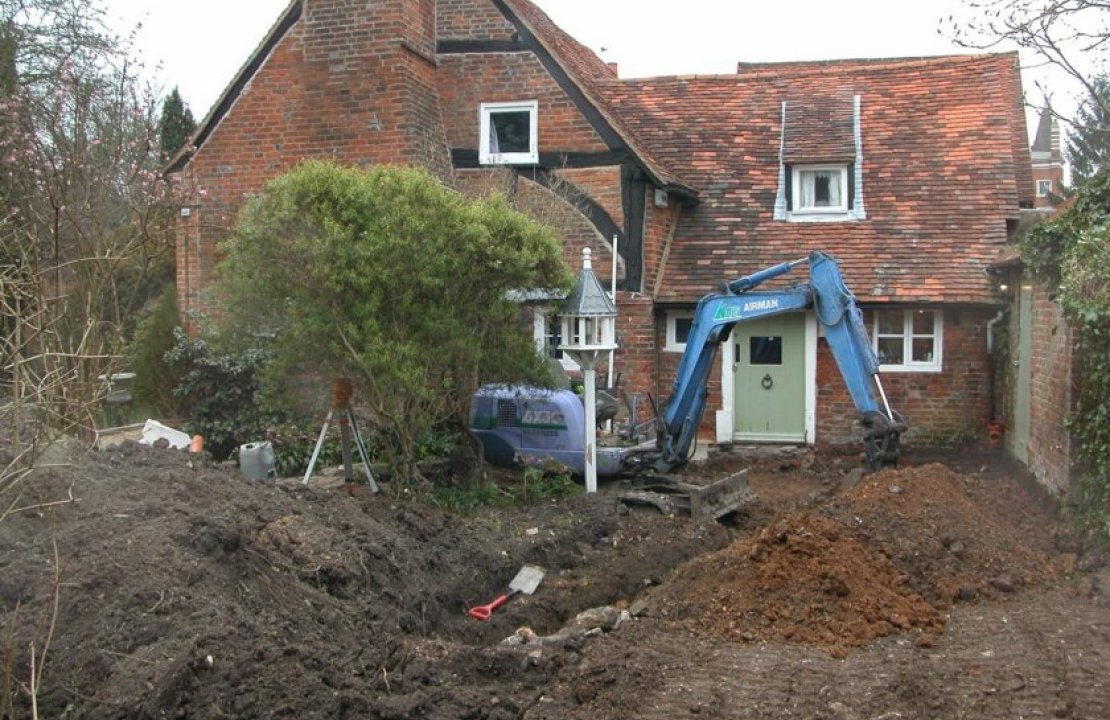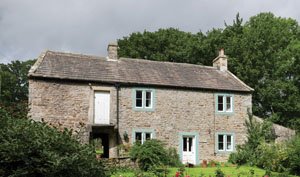Sometimes however, a house is purchased with it’s development potential in mind because it has a layout which clearly doesn’t work well. Sometimes it's obvious what kind of building project that a home would benefit from. Other times it is obvious that a house has issues, but you may not know how to solve them. A good way to explore how successful period home extensions can be created is to look at houses similar to yours that have been extended or to chat through ideas with a good architect. You can check out our article about managing a building project here.
What's the best way to extend a terraced house?
If you live in a terraced house, the only place for an extension is out the back (or underground) and for most people this is likely to encompass a kitchen/diner - sometimes with, but often without, a second storey. Because your only possibility for extending the house is out the back, one of the most important decisions has been made for you. However, the other most important thing to decide is whether you want the extension to match in seamlessly with the original house, or whether you want it to make some sort of design statement in terms of a contrasting styles.

Our advice is that if you live in a period house it’s probably because you admire period architecture and therefore an extension built in a period style to match your house will always be to your taste. If you build in any other style, you are taking a risk – even if a modern extension is something that you will love, you may narrow the resale market for your house by doing this as your statement may not be to everyone’s taste. A period style extension is a safer bet and is something less likely to be turned down by the planning department. In addition, if you live in a conservation area or your house is listed, planners might be really strict about what can and can’t be done.
What's the best way to extend a semi or detatched house?
If you don’t live in a terraced house, the position of your extension is open for debate. Period home extensions tends to be out the back or to the side of the house, although some people may even add small buildings such as porches and boot rooms at the front of their house. However, planners do not like you extending towards the road so that your house protrudes more than your neighbours. So, if you live in a row of identically positioned properties, there may be resistance from the planners.
When choosing the position of your extension, here are some points to consider:
- Ideally you’d build to make the most of the light so that the windows are facing the south
- Traditionally a kitchen would go on the north end of the house to keep the room cool
- An easy win with the planners, especially a listed one, is to convert an existing outbuilding or to build in the position of the outbuilding
- As the changes in the weather are most pronounced facing the south side of the house, the south end of the house would need the most repainting and maintenance
- The roofline will need to continue into your extension so that the pitches flow, otherwise the whole roof structure may need to be altered.
- It should help you make the most of your views of your garden or the surrounding area.
The layout and design is a complicated matter that you’d need to discuss with a good architect - find some advice about choosing one here. You need to determine what the needs of you and your family are and how your house falls short of those needs. From that, a list of requirements can be compiled. Where you add a room(s) is likely to be determined by the flow of the house, its interior, and how adding other rooms could enhance that. Sometimes, although you think you need to extend, you may actually need to replan your room layout and usage. That can often make dramatic changes to optimise the use of space in a house.
How to ensure you're adding value
If you are looking to ensure that period home extensions are in-keeping with your original house, you need to make sure that all materials chosen match those used originally. For a period house build in brick, you need to choose handmade bricks – there are many suppliers of handmade bricks and good matches can be found for the originals. There are many different manufacturers and importers of handmade bricks - the most budget friendly bricks are often made in Turkey, Poland or Holland in colours and finishes to match pre war Imperial sized bricks and then imported in bullk by a brick retailer. A specialist brick matcher would be willing to visit your house and bring samples to help you find that perfect match if your project is large enough.
The proportions of your new rooms should emulate those of your existing house if at all possible. So ideally, ceiling heights, door and window sizes and styles should be identical throughout so that the transition from old to new appears seamless.
Handmade reclaimed clay or slate roof tiles, the most common tiles used on Victorian houses, would need to be sourced if you are extending the roof. The best source for these would be local reclamation yards as materials used tend to be regional and local yards are likely to have materials reclaimed locally.
 Similarly the interior should match that of the original parts of your house. This means that plaster coving, traditional skirting, Victorian architrave, picture rail mouldings, dado rail, floorboards, windowsills and style of decor etc should be a close match for what is used elsewhere in your home. A common mistake is for people living in a Tudor house with lime plastered curved walls, making the schoolboy error of using gypsum plaster and ending up with sheer, flat walls. Make sure that, if you have old beams in your house, you make beams in any new parts of the house look old by purchasing reclaimed beams and further ageing them as appropriate.
Similarly the interior should match that of the original parts of your house. This means that plaster coving, traditional skirting, Victorian architrave, picture rail mouldings, dado rail, floorboards, windowsills and style of decor etc should be a close match for what is used elsewhere in your home. A common mistake is for people living in a Tudor house with lime plastered curved walls, making the schoolboy error of using gypsum plaster and ending up with sheer, flat walls. Make sure that, if you have old beams in your house, you make beams in any new parts of the house look old by purchasing reclaimed beams and further ageing them as appropriate.
Although you could be deemed boring by some, you’ll be thought of as clever by many other people when they realise that although most of your house was built in 1886, other parts were built in 2016. It should be almost impossible to tell where one ends and the other begins. Period home extensions that take into account each factor above set themselves apart from those that have been poorly planned and executed.


Be the first to add a comment...